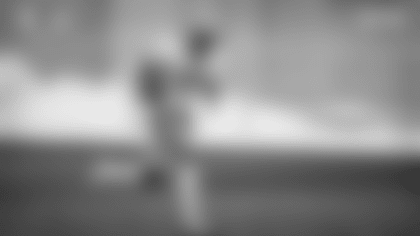*The Green Bay Packers have numerous representatives involved in the National Scouting Combine in various ways, from scouting players to performing medical evaluations to videotaping workouts.
Packers.com takes a look at the team's involvement, and at the process of getting ready for and working at the Combine, in a three-part series.*
If there's one portion of the annual National Scouting Combine whose importance isn't nearly reflected in the media coverage, it would be the medical assessments of these hundreds of draft-eligible players.
After all, the last thing any NFL team wants is to be caught off-guard by a draftee's medical history, which could indicate a high probability of future injuries and/or a shorter-than-average career.
The Packers send a full complement of medical professionals to the Combine each year, including head athletic trainer Pepper Burruss, assistant athletic trainers Bryan Engel and Kurt Fielding, team physicians Dr. Patrick McKenzie and Dr. John Gray, and two of Dr. McKenzie's orthopedic partners.
Their task during four days of performing physicals and other medical tests is to gather as much relevant information as possible on the players at the Combine, information they can then bring back to Green Bay and sift through to assess any medical risks that might factor into a player's future.
"There's a loose parallel that could be made between going to the Combine and a car auction," Burruss said. "You might represent someone who wants a 1983 Corvette, but not all 1983 Corvettes are the same once you open the hood and take a look underneath."
In fact, the medical assessments were essentially the reason the Combine came into existence.
As a trainer with the New York Jets back in 1977, Burruss was on hand as the Jets drafted offensive tackle Marvin Powell and wide receiver Wesley Walker in the first two rounds. It turned out both players had medical irregularities that weren't discovered until after the draft - Powell had an under-rehabilitated knee injury and Walker was legally blind in one eye.
Both players went on to distinguished careers with the Jets, but the team decided it wouldn't be surprised by its draft picks that way ever again. So the following year, during the months leading up to the draft, the Jets' training staff (including Burruss) brought more than 100 potential draftees to New York for physicals. The following year, they brought in more than 200.
Other teams caught on, and soon potential draftees were being flown all over the country so various teams could perform similar physical exams, and the scheduling for both the teams and the players got to be a competitive nightmare, in addition to the process becoming needlessly repetitive.
By the early 1980s, the national scouting organizations started to "combine" their efforts and bring limited groups of players and teams to one location, then Tampa Bay, to get a considerable number of medical assessments handled more efficiently. Eventually the workouts and other testing that make up the current Combine were added, and it was centralized in Indianapolis in the late 1980s for all teams and 300-plus invited players.
"It is a mega-event now," Burruss said. "We look back to where it was, and we were bringing these guys into New York City, flew them in, gave them per diem, T-shirts and hats, and told them where to go for their physical, or took them there.
"It's so refined now to where it is. It's quite a machine the way it works."
The medical work prior to the Combine starts with gathering the information already compiled by the players' schools and the scouting organizations.
To that is added all the in-depth medical screenings the players go through at the Combine, including laboratory tests, drug screenings, internal medicine exams, vision, cardiac evaluations, body composition and Cybex leg strength assessments, to name a few.
Based on their injury history, players also have the appropriate X-rays and MRIs done at an Indianapolis hospital.
{sportsad300}The most important part of the medical assessment is the orthopedic exam, according to Burruss, because of the physical demands of football. For this stage, the Packers share a room with four other teams (the Saints, Panthers, Giants and Buccaneers), and players are brought in to be poked and prodded in front of each team's physicians, usually with one orthopedist leading the exam and others observing.
The doctors share some thoughts amongst the group, record their observations on voice recorders and evaluate any diagnostic images in a player's folder, while Burruss records preliminary data in his laptop.
Ultimately, all the information gathered is brought back to Green Bay, and the Packers' medical staff processes all of it to produce grades or "risk assessments" on each player. They also trade grades with various teams, converting those grades to their own scale and seeing if anything in a player's medical profile warrants further evaluation.
"I'm not a draft nik so I don't pretend to know who the top-rated stars are from the lesser-known players," Burruss said. "Maybe that's a good thing as there is little chance anyone could accuse us of spending more time on the star players' exams, as we will exam all 326 players with the same acuity, star or not.
"Since we don't factor in their football field prowess, we are simply assigning a judgment of their physical well-being and medical risk."
General Manager Ted Thompson and his staff will then meld that information as they finalize plans for the 2007 draft, and the value of the medical component is undeniable, even if the definitive information isn't brought into the meeting rooms until after everyone returns from Indy.
"If we didn't do anything else at the Combine and just did the medical, it would still be a win-win situation for all the teams," Packers college scouting coordinator Danny Mock said. "You don't want to waste drafting a guy not knowing in-depth his medical history, and then having the guy get hurt in practice or having a recurring injury.
"That, without a doubt, is the most important thing."














